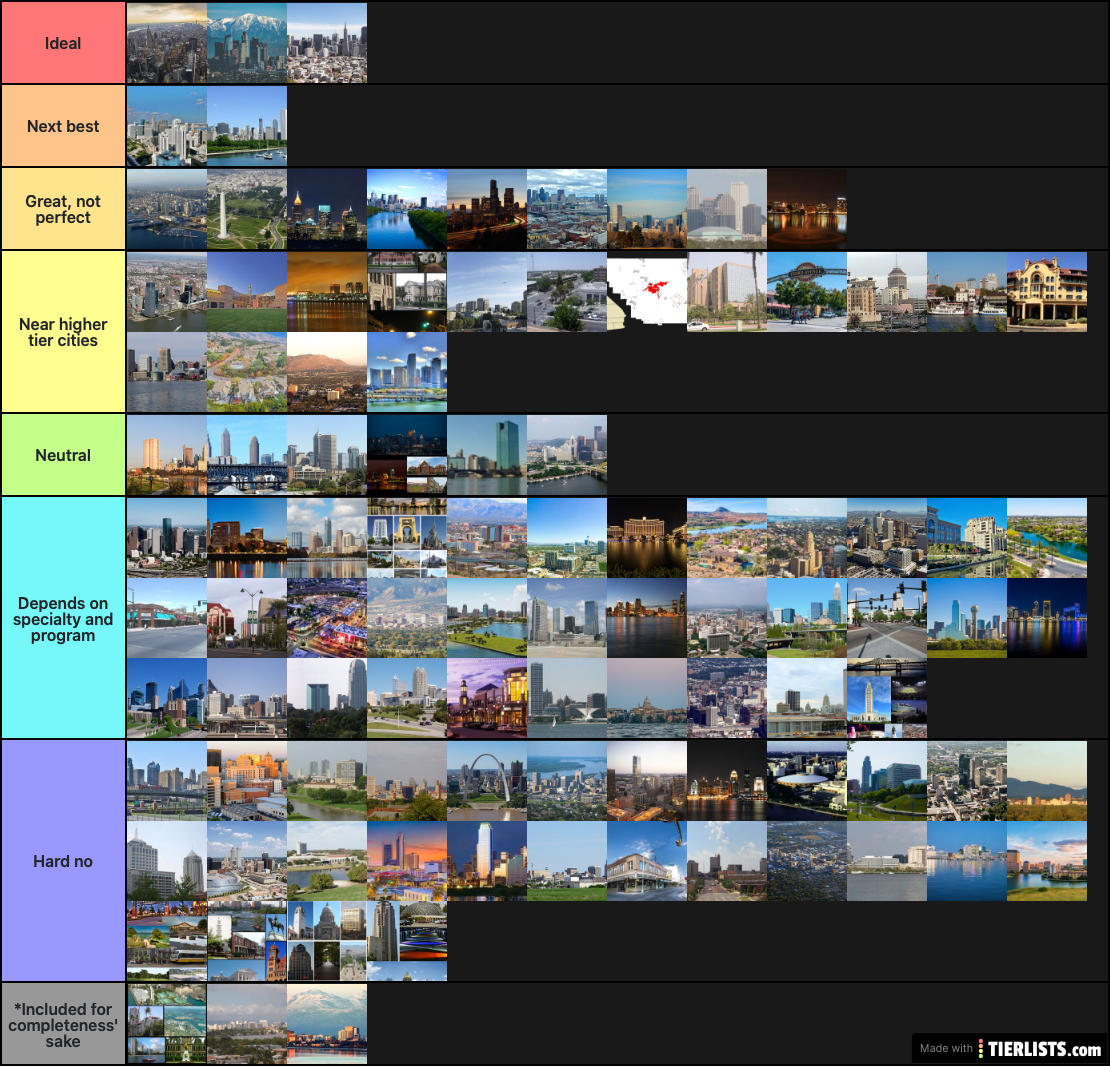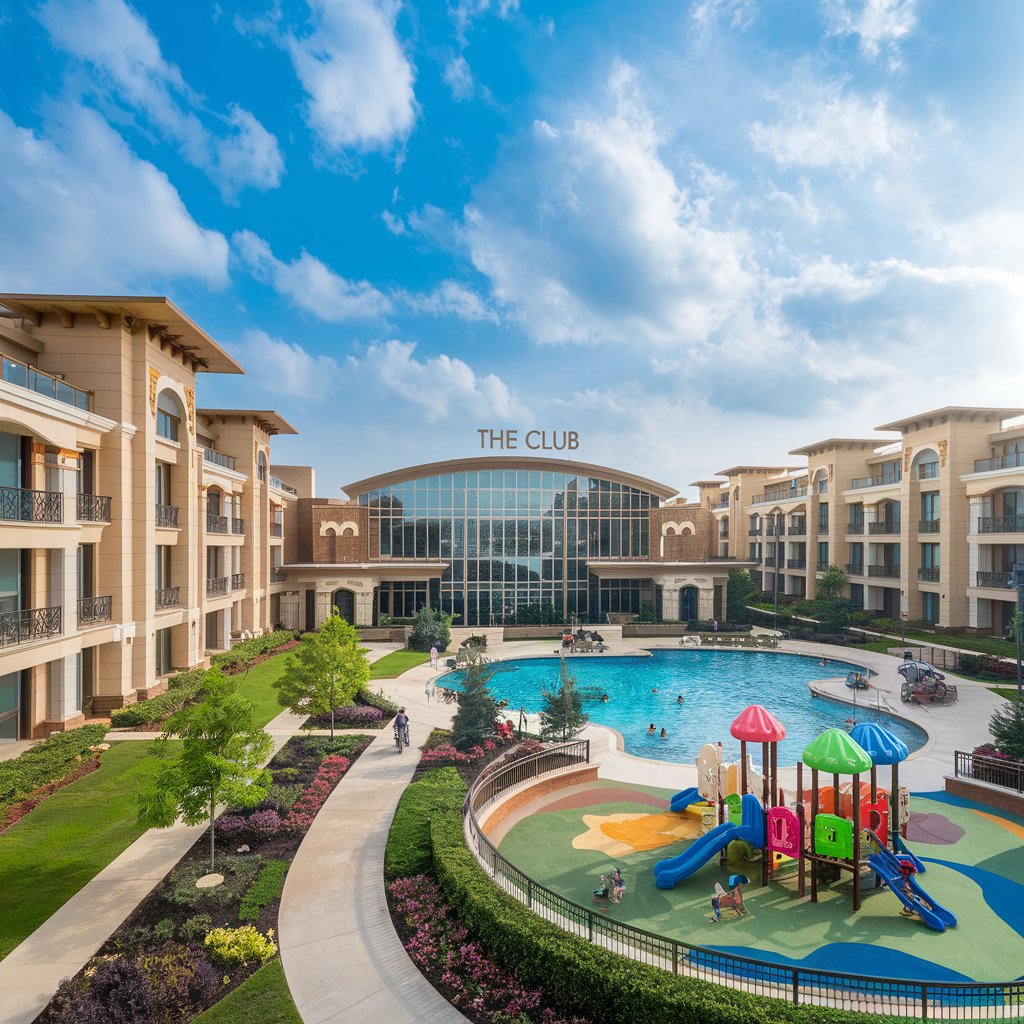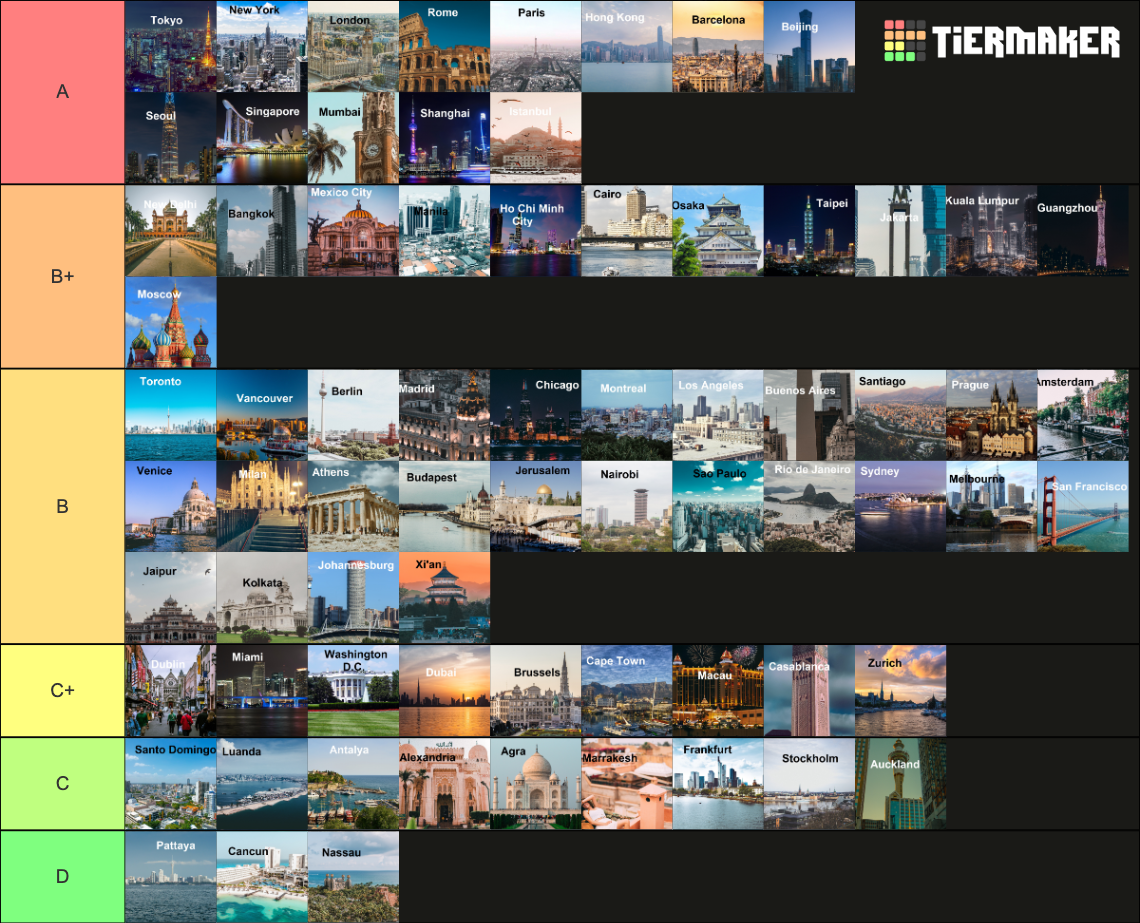Have you ever thought about how we talk about cities, and what makes some places stand out above others? It's almost as if we naturally put them into groups, giving some a special kind of status. This way of thinking, you know, about a city's standing, often brings up the idea of "tiers," especially when people discuss what makes a location truly top-notch.
When folks chat about places to live, to work, or even just to visit, there's a good chance you will hear certain cities mentioned with a particular kind of respect, almost like they are at the very top of a list. This isn't just about how big a city is, or how many people live there, but more about its overall feel, its opportunities, and the general buzz it carries. So, in a way, we are constantly, without really thinking about it, making these sorts of informal rankings in our heads.
This whole idea of ranking, or putting things into different levels, isn't new at all. It's something we do with all sorts of things, from products to sports teams, and yes, even to cities. The notion of a "tier" helps us sort through a lot of information, helping us make sense of how different elements fit into a larger system. When we apply this idea to cities, particularly what might be called "tier 1 cities in USA," it helps us see which places might be considered the best of the best, or at least the ones that sit at the highest level of a particular set of characteristics.
- Does Cocaine Make You Skinny
- Eye Doctors In Eaton Ohio
- Jan Roberts Age
- Scuba Certification Kansas City
- Goodbye Letter To Estranged Daughter
Table of Contents
- What Does "Tier" Really Mean for Cities?
- How Are Cities Placed in Tier 1 Categories?
- The Concept of City Tiers - A Deeper View
- Why Do We Even Talk About Tier 1 Cities in USA?
- How Does Data Shape a City's Tier Status?
- What Happens When a City is Considered Tier 1?
- The Everyday Impact of City Tiers
- Looking at the Levels of Tier 1 Cities in USA
What Does "Tier" Really Mean for Cities?
The word "tier," at its heart, just means a level, a row, or a layer in a system that has things arranged one above another. Think about a wedding cake, for instance; it has different layers, one on top of the next. Each layer is a "tier." Or, consider stadium seating, where rows are stacked up, giving everyone a good view. Those are also tiers. So, when we talk about cities, applying this word suggests there's some sort of structure where some cities are seen as being on a higher level than others, almost as if they are part of a specific kind of pecking order, you know?
This idea of levels, or ranks, is really common in lots of different setups. For example, if you have ever used a tool that helps you make a ranked list of anything, like a "Tiermaker" sort of program, you will see how quickly you can put items into different groups, or levels, in just a few moments. You can use a ready-made layout or even put in your own pictures to make a unique ranking. This shows that the act of categorizing things into levels is something many people do quite naturally, almost instinctively, I mean.
When it comes to cities, this concept of a "tier" often means a city holds a particular position within a larger arrangement. It is a level within a setup, a framework, or a group that is put together with one piece on top of another. It can show a standing, a grade, or different steps that are all part of a particular way of organizing things. So, calling a city "tier 1" means it occupies that very top spot, the first layer, in whatever system or set of criteria we are using to sort them, basically.
- Step Dad Step Daughter Wedding Songs
- Lady Gaga Nipples
- Ryan Gosling Costumes
- Palworld Pals Not Eating When Offline
- Navigating Singlehood After Divorce
How Are Cities Placed in Tier 1 Categories?
Figuring out how cities get assigned to these top-level categories, or "tier 1 cities in USA," can involve a few different ways of looking at things. Sometimes, this placement is based on very specific, official data. For instance, some government programs, like certain "gocps programs," use these levels as part of their selection process. This means that a city's status, or its tier, might directly affect how it participates in or benefits from these sorts of initiatives. It's not just a casual label; it can have real consequences, you know?
One very clear example of how these levels are set comes from how numbers and information are gathered. Tiers, in some cases, are given out based on the most up-to-date information from population counts, like the latest census figures. This kind of data can tell us a lot about a place, like how many people live there, what kinds of jobs are common, or how much money people generally make. So, a city that shows very strong numbers in these areas might naturally find itself considered part of that top grouping, or "tier 1," just based on the facts, you know, the raw information.
It is also worth noting that the way a city is put into a certain level can sometimes depend on what specific purpose the ranking serves. For example, in a place like Chicago, a young person's chances of getting into the city's best, most sought-after schools can really depend on what "tier" their home area falls into. There are even specific tools that help people figure out what level their neighborhood is considered to be. This shows that "tier" can be a very practical, everyday kind of measurement, affecting real life in ways that might not be immediately obvious, so it's a very practical thing.
The Concept of City Tiers - A Deeper View
Looking at the idea of city tiers, it is clear that it goes beyond just simple numbers. It is about how we organize and think about places in a broader sense. When we say a city is "tier 1," we are often saying it meets a certain high standard, or that it represents the very best of something. This kind of arrangement, where one level is placed above another, helps us make sense of the world around us, allowing us to compare and contrast different locations based on various qualities, you know?
The meaning of "tier" as a rank or a layer can be applied to cities in many ways, some formal and some less so. It could refer to a city's standing in terms of its economy, its cultural influence, its educational opportunities, or even its quality of life. The way we use the word in a sentence, like saying a city is in the "top tier," immediately conveys a sense of its superior position. It is a simple word, but it carries a lot of weight when we apply it to complex things like urban centers, in some respects.
This whole system of levels, or tiers, helps us categorize things that might otherwise seem too big or too varied to compare easily. It provides a framework for discussion and for making decisions. Whether it is about where a business might open its doors, where families might choose to put down roots, or where policy makers might direct resources, the idea of a city's "tier" status can play a part in those considerations. It is a way of creating a clear picture of where a city stands in relation to others, essentially, you know.
Why Do We Even Talk About Tier 1 Cities in USA?
So, why is it that the phrase "tier 1 cities in USA" pops up so often in conversations, particularly when we are thinking about the nation's urban centers? Well, it is because this way of speaking helps us quickly identify places that are generally recognized as leaders in various aspects. It is a shortcut, in a way, to describe cities that are often at the forefront of innovation, culture, or economic activity. People use these terms because they convey a lot of information very quickly, you know?
The idea of a "tier 1" city often implies a certain level of opportunity and influence. These are the places that might draw the most attention, the most investment, or the most talent. When we talk about them, we are often talking about places that are seen as driving forces within the country, setting trends or leading in specific industries. It is a way of acknowledging their importance and their role in the bigger picture, almost like they are the main characters in a story, so to speak.
Furthermore, discussing "tier 1 cities in USA" helps us to understand the different kinds of experiences available across the country. A city that falls into this top level might offer a particular type of lifestyle, a specific set of career paths, or a certain kind of cultural environment that is distinct from places in lower tiers. It allows for a kind of mental mapping of the country's urban landscape, helping people to make choices about where they want to live, work, or even visit, which is pretty useful, really.
How Does Data Shape a City's Tier Status?
When we think about how a city gets its spot in a particular tier, especially a top one, the role of hard numbers and information becomes very clear. As mentioned earlier, sometimes these levels are given based on the newest information from official counts, like census data. This means that things like population size, the number of businesses, the average income of residents, or even the diversity of the population can all play a part in determining where a city stands in a ranking system, you know.
These pieces of information provide a measurable way to compare cities. If a city shows strong growth in its population, a high number of new businesses opening, or a significant increase in its economic output, these factors can contribute to it being seen as a "tier 1" location. The data acts as a kind of report card, showing how well a city is doing in different areas. It is a way of objectively looking at the various qualities that make up a city's overall standing, basically.
Beyond official census figures, other types of information can also influence a city's perceived tier. This might include statistics on educational attainment, crime rates, public transportation usage, or even the number of cultural attractions. When these various data points are collected and analyzed, they help to paint a comprehensive picture of a city's strengths and weaknesses, which in turn helps to inform its placement within a tiered system. It is a bit like putting together a puzzle, with each piece of information adding to the overall image, you know.
What Happens When a City is Considered Tier 1?
So, what actually takes place when a city earns the label of "tier 1"? Well, for one thing, it often means that city becomes a magnet for various types of activity. Businesses might see it as a prime spot to set up shop, knowing it offers a large customer base, a skilled workforce, and good infrastructure. This can lead to more job opportunities and a stronger local economy, which is a very good thing for everyone living there, basically.
Being recognized as a top-level city can also bring a certain prestige and visibility. It might mean the city gets more attention from national and international media, leading to more tourism or even more people wanting to move there. This increased interest can further boost the city's economy and cultural scene, creating a kind of positive cycle. It is a bit like being at the top of a popularity contest, where everyone wants to be involved, you know?
Moreover, for the people who live in these "tier 1" cities, it can mean access to a wider range of services and amenities. This might include better public transportation, more diverse dining and entertainment options, or higher quality educational institutions. The city's status can influence the resources it receives and the types of developments that occur within its boundaries, often leading to a richer and more varied experience for its residents, which is quite nice, really.
The Everyday Impact of City Tiers
The idea of cities being grouped into tiers isn't just an abstract concept; it can have very real, everyday effects on people's lives. Think about the example of Chicago, where a young person's chance of getting into certain desirable schools can depend on the "tier" of the area they call home. This shows how a city's internal ranking system, which is a type of tiering, can directly influence access to important opportunities, you know?
This kind of tiered system can affect things beyond just schooling. It might influence where new parks are built, where public services are expanded, or even where certain types of businesses decide to invest. When a city is organized or thought of in these layers, it can guide decisions about resource allocation and urban planning. It is a way of managing a large and complex urban environment by breaking it down into more manageable categories, in a way.
For residents, understanding which tier their community or city falls into can help them make informed choices about where to live, work, or raise a family. It can provide a quick snapshot of what to expect in terms of opportunities, services, and overall quality of life. So, while the term "tier" might seem formal, its practical application can be very personal, affecting daily routines and long-term plans for many people, which is quite significant, really.
Looking at the Levels of Tier 1 Cities in USA
When we consider the various levels that make up "tier 1 cities in USA," it is important to remember that these levels are often about a city's standing in a particular system. A "tier" is a level in a system, a structure, or an organization that is set up with one part above another. It can show a rank, a grade, or different stages that are all part of a specific way of organizing things. So, when we talk about "tier 1," we are talking about the very first, or highest, level within that setup, you know.
This means that a city considered "tier 1" is at the top of a particular hierarchy, whether that hierarchy is based on economic output, cultural influence, or some other set of criteria. It signifies that the city has achieved a certain level of excellence or importance within its category. This idea of multiple layers or levels, arranged one above another, helps us to understand the relative positions of different urban areas, basically.
Ultimately, the way we talk about "tier 1 cities in USA" reflects a common human tendency to categorize and rank. It is a way of making sense of the vast and varied landscape of the nation's urban centers. By understanding what "tier" means and how these levels are assigned, we can gain a clearer picture of what makes certain cities stand out and how their status can impact both their future and the lives of the people who call them home, in some respects.
This article has explored the concept of "tier 1 cities in USA" by examining the fundamental meaning of "tier" as a level or rank within a system. We looked at how cities are placed into these categories, often using data from sources like the census, and discussed the reasons why we often talk about these top-level cities. We also considered the everyday impact of a city's tier status, from influencing school access to shaping urban development, and explored what it means for a city to be considered at the highest level of various rankings.
Related Resources:



Detail Author:
- Name : Marlene Gottlieb
- Username : carter.eloy
- Email : uframi@yahoo.com
- Birthdate : 1986-12-31
- Address : 362 Darwin Square East Cletus, AZ 58253-6136
- Phone : +1-864-446-9012
- Company : Hilpert LLC
- Job : Food Preparation
- Bio : Odio autem totam repellendus quibusdam aut. Corrupti nihil asperiores quaerat vero at. Omnis inventore ex repudiandae eos aut aut. Ad vel asperiores a est laborum maiores amet.
Socials
tiktok:
- url : https://tiktok.com/@buckridged
- username : buckridged
- bio : Adipisci sequi porro esse est soluta ullam. Quasi velit eligendi non nisi.
- followers : 362
- following : 1994
instagram:
- url : https://instagram.com/dereck3522
- username : dereck3522
- bio : Eius quo natus sint nobis. Ea eos voluptatum labore et.
- followers : 5195
- following : 669